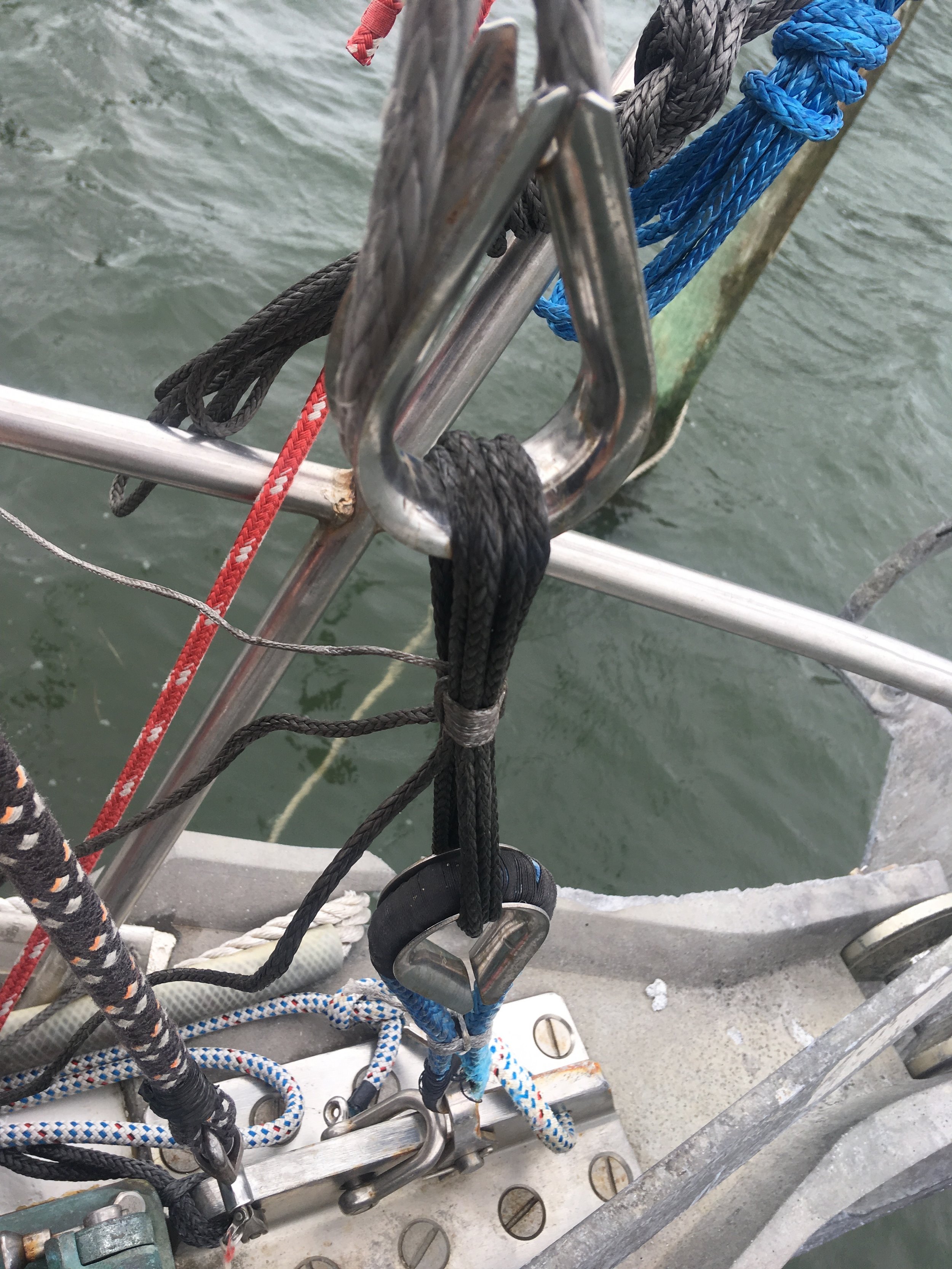Wisdom, our 1968 Morgan 45 was re-rigged with synthetic standing rigging back in 2015. The headstay has endured use, abuse, and a lot of weather over these two years. Our headstay's deadeye got severely damaged by our anchor and needed to be replaced, giving us a wonderful opportunity to evaluate how the stay is holding up at the bow.
The bow is known to be the harshest place on a yacht for rigging. Every single wave that splashes up will wet the stem and the lower part of the headstay in a fine misting of salty moisture. This mist will work its way into the tiniest nooks and crannies in your headstay, causing devastating corrosion from the inside out.
To make life for your stem fittings even harder, being up at the tip of the bow, they are often ignored and forgotten, as the rest of the boat gets cleaned regularly, but the headstay might only get a quick splash with a hose.
On most yachts, the headstay lives inside the furler, where it is forgotten and ignored until something breaks. On yachts with hank on sails, the headstay is easily inspected, but still neglected.
Synthetic rigging prevails in these hardships, as the Dyneema fibers are made out of plastic and are immune to corrosion caused by moist salt spray. Let us see what lies beneath the surface of our headstay!
Under all those wraps, you will find the true knot that holds the entire stay in tension: The Shroud Frapping Knot. This knot pinches and seizes the lashings together with such ferocity that even slippery Dyneema can not escape its hold.
This knot is tied while the tails of the lashings are under tension with the entire tensioning system. While the lashings are tight and under load, the Shroud Frapping Knot pinches them in place, allowing you to remove the tensioning lines without losing any tension in the headstay.
This relatively simple knot can be a bit time consuming to tie, taking me close to 20 minutes, but it will hold steadfast for years, never yielding nor giving way as you sail.
On stays that will require a significant amount of tension, it is best to use oversized thimbles as they will accommodate more wraps with the lashings, giving you significantly greater mechanical advantage to properly tension the stay. They also provide a wider radius turn which imparts less stress on the fibers of the lashings.
With the tension removed and the lashings untied, you can see the inside of the eye splice at the end of the stay. The fibers have flattened out as they have been pressed into the thimble for two years. There is some slight corrosion staining that appears on the eye splice, and this is from slight surface rusting that occurred on the stainless steel thimble. 316 Stainless Steel is famed for being corrosion resistant, yet in two years on the bow, it has begun to corrode in places that are not visible to external inspection. Imagine if this were a steel headstay with steel fittings swaged together up here. Corrosion would have already set in and it would be a countdown until something failed in a catastrophic manner.
Synthetic standing rigging is immune to these sorts of problems and the steel components utilized are small and easy to inspect, making their impact on the entire situation much less grave.







